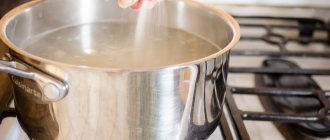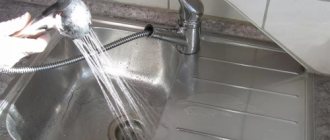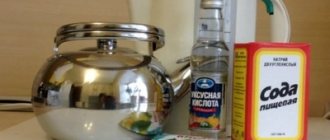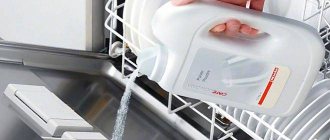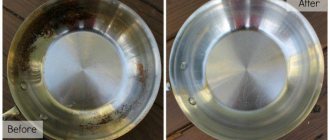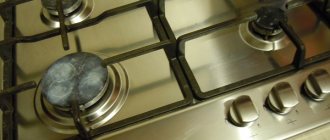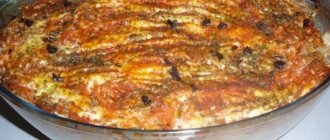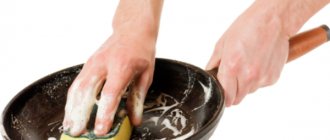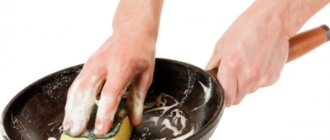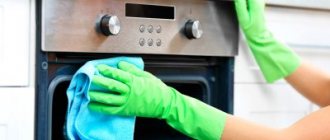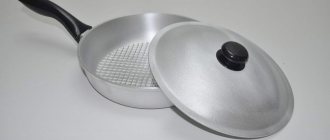Many housewives prefer stainless steel pans. This material has proven itself to be one of the most durable. In addition, it is considered environmentally friendly, which means it is completely safe for health and cooking. Even after several decades, the dishes will remain shiny and clean if you care for them properly.
We will tell you a few secrets on how to clean stainless steel. You need to know them in order to successfully deal with burnt marks and dirt. And photos and videos will help you avoid making mistakes when choosing products to care for kitchen utensils, after using which they will shine.
Features of the material
Stainless steel cookware is a success for a reason - the advantages of steel products have been tested for more than one generation. Housewives value shiny kitchen utensils for their lightness, durability, and ease of cleaning. The main six advantages of cookware are considered.
- Corrosion resistance. Stainless steel contains chromium. It is this element, when reacting with oxygen, that creates a protective anti-corrosion film on the surface of the material, which has the ability to self-renew.
- Strength and durability. Stainless steel is resistant to mechanical deformation: chips, scratches. With proper care, products made from this material can last for decades.
- Heat resistance. Utensils made of steel do not lose their functional characteristics over a wide range of temperatures: kitchen appliances made of stainless steel can be used at both low and high temperatures.
- Environmental friendliness. The high density of the material does not allow pathogenic microorganisms to accumulate on the walls of the dishes. Scientific research has confirmed the bacteriostatic properties of stainless steel.
- Versatility. Steel cookware can be used for cooking food on gas, glass-ceramic and induction cookers.
- Impeccable appearance. The metallic shine of steel utensils will fit into any interior: such utensils look stylish and presentable if you properly care for them.
Stainless steel cookware does not affect the taste of food during cooking or during long-term storage in it.
Possible damage and contamination
Kitchen utensils made of steel retain their advantages only with proper care. If the surface of the product is damaged, dirt and grease accumulate on the walls of the kitchen utensil. This leads to the following problems:
- anti-corrosion properties are lost;
- wear resistance decreases;
- food begins to burn during heat treatment;
- the appearance becomes dull and unsightly.
Improper use can lead to three “diseases” of steel cookware.
- Nagar. Immediately uncleaned, the yellow coating formed by splashes of fat gradually becomes a hard, dark-colored “shell.”
- "Rainbow" on the bottom and walls. The film lining the product thickens when heated to 100 °C. When the layer's density increases tenfold, it turns blue or rainbow. This affects not only the appearance of the product, but also its functionality.
- Scale. Limescale is a deposit of calcium carbonate in water. The metal reacts with impurities contained in tap water: dotted spots appear on the inner surface of the product. When boiling, chlorine and mineral salts settle on the bottom and walls, forming spiral-shaped “patterns”.
To extend the life of kitchen utensils and maintain their appearance, it is worth providing stainless steel utensils with proper care.
Secrets of care
Stainless steel cookware needs to be maintained regularly. Three simple rules will help preserve the functionality and decent appearance of the dishes for a long time, and will not allow severe contamination.
- Regular cleansing. After each use, the product must be washed with a soft sponge and detergent with a gentle formula. This measure will prevent the appearance of stains and eliminate the need to scrape off pieces of dried food.
- Delicate wash. It is recommended to wash stainless steel utensils by hand; you should not use a dishwasher.
- Perfect dryness. If you leave a stainless steel appliance to dry naturally in the open air, the dishes may become covered with dark spots. Therefore, each time after washing, the product must be wiped dry with a clean towel.
When cooking, you can only use filtered water and do not heat an empty pot or frying pan for a long time. If you cannot avoid contaminants that a regular detergent cannot deal with, you need to resort to stronger methods.
Principles of cleansing
Cleaning steel utensils is based on four principles.
- We say a firm “no” to harsh methods. Do not use products containing abrasives; the use of metal sponges and brushes is also unacceptable.
- We choose products without ammonia and chlorine. These components may damage the surface of products.
- We use salt and soda only in warm and hot water. Adding large amounts of these products to cold water can cause dark spots to appear on stainless steel cutlery.
- Don't put off cleansing. “Fresh” contamination is much easier to remove.
You can fight pollution using store-bought or folk remedies.
Characteristics of raw materials
Stainless steel is an alloy based on iron with alloying additives (chrome, nickel, steel). Each additive enhances the positive and reduces the negative parameters of the raw material. The resulting metal is much stronger than conventional analogues.
Advantages of the material Source ua.all.biz
Corrosion resistance is the main advantage of modified iron. When exposed to oxygen, chromium forms a thin layer of insoluble oxide on the surface. The film makes the alloy inert towards aggressive substances. The barely noticeable protection prevents the metal from entering into chemical reactions with the environment.
Nickel in the composition gives the alloy ductility, viscosity at low degrees and increases heat resistance. The material has a wide operating temperature range. The additive reduces the spread of spot and contact rust. Durable modified steel does not collapse when:
- stretching;
- welding;
- bending;
- rental
What to choose in the store
When you go shopping for a stainless steel dish cleaner, you need to:
- analyze reviews - recommendations will help you make the right choice;
- study the composition - the product should not contain abrasives, chlorine and ammonia;
- pay attention to the markings - the manufacturer must indicate for which materials a particular product is suitable.
It is advisable to give preference to proven means. Judging by the reviews, they have proven themselves well:
- "Dafor";
- "The Shine of Steel";
- "Selena";
- "Shumanite";
- Luxus;
- Help;
- Delu;
- Dr. Beckmann;
- Fresh.
Some housewives use oven cleaners to clean stainless steel cookware from grease and other contaminants. They apply the gel for 15-20 minutes, then wash the product with regular detergent.
Special detergents
To clean a burnt stainless steel pan, you can use not only available substances, but also specialized products designed for this purpose.
Experts believe that Amway dishwashing products are among the best. They are produced in liquid form, they contain a minimum of abrasive substances, so they carefully and effectively clean surfaces.
The drug “Shumanit” is very popular; it is believed that it can overcome even complex and old stains on burnt pans.
To avoid accidentally damaging the dishes, it is advisable to carefully study the instructions before use.
How to wash stainless steel dishes using your grandmother's experience
You can clean stainless steel cookware from dark stains, carbon deposits and other contaminants using improvised means that will ensure the most delicate effect.
Universal solution: boiling
Boiling is the most effective way to clean stainless steel kitchen utensils. This method will successfully handle:
- soot;
- scale;
- greasy yellow coating;
- other complex contaminants.
If you need to clean the inside of a pot or pan, three simple steps will help.
- Prepare the composition. Fill the contaminated dishes with a special solution.
- Put on fire. Wait for it to boil, boil for 15 minutes.
- Remove from heat, cool. Wash the product with detergent.
If you need to clean spoons, forks, as well as frying pans, pots, bowls and teapots not only from the inside, but also from the outside, follow the three-step instructions.
- Preparation. Pour the solution into a large heat-resistant container (you can use a bucket).
- Boiling. Immerse the dishes in the mixture and boil for five to 15 minutes.
- Rinse. Remove from heat, cool, and wash items with detergent.
How to prepare the composition for boiling? If the contamination is not severe, you can boil the dishes in clean water. To enhance efficiency, it is worth making a solution (of your choice):
- dishwashing detergent - two to four tablespoons per liter of water;
- vinegar - combine with water in a 1:1 ratio;
- laundry soap and PVA glue - dissolve a third of a bar of soap and a tablespoon of glue in 4 liters of water;
- soda ash, household soap and silicate glue - 100 ml of glue and soda each, a bar of soap per 10 liters of water.
Instead of dishwashing detergent, you can use liquid or crushed laundry soap in the same proportions.
It will cope well with light stains and remove “boiling apple” blackness. You need to peel the sour apples, add water, and boil stainless steel products in this solution for five to seven minutes. Instead of fruit peels, you can use potato peelings or finely chopped onions.
Anti-carbon pastes
Peculiarities. You can remove carbon deposits from a stainless steel pot or frying pan using homemade pastes.
Components to choose from:
- crushed activated carbon (30-40 tablets), mixed with water to a paste consistency;
- ground coffee beans mixed with water to form a thick paste.
Application
- Apply the composition in a thick layer to the contaminated areas.
- Wait 20-30 minutes.
- Wash the device with regular detergent.
Liquids from white deposits and scale
Peculiarities. You can remove scale from a stainless steel kettle using simple products. The concentration of citric acid is adjusted depending on the degree of contamination: from 15 to 50 g per liter of water. Turks and samovars made of stainless steel can be washed in a similar way.
Components to choose from:
- vinegar;
- citric acid solution;
- Coca Cola.
Application
- Pour the product into the “affected” product.
- Bring to a boil and simmer over low heat for a couple of minutes.
- Drain the mixture and add clean water.
- Boil and wash with regular detergent.
Bring back decorativeness
Shine is a recognizable feature of stainless steel. Over time and after washing, dishes, household appliances and heating devices lose their former attractiveness. There are ways to help restore decorativeness.
Toothpaste and ammonia will help get rid of rainbow stains on stainless steel. Add a couple of drops of alcohol to the cleaning mixture, then apply it to the defects with a napkin. After a couple of minutes, rinse with clean moisture.
Bring back beauty to the alloy Source aredi.ru
To make kitchen utensils shine, use lemon juice. For a liter of cold water, 1 teaspoon of liquid is enough. Dip a sponge into the solution and rub generously over the surfaces inside and out. Cutlery can be soaked for a couple of minutes. Then the dishes are rinsed and wiped dry with a clean cotton towel.
Raw potatoes will help polish your stainless steel sink, hob and hood. The tuber is cut into halves. The wet side is rubbed over the problematic surface, then rubbed with a dry cloth.
Methods for processing forks and knives
Four products will help clean stainless steel cutlery from black deposits and other contaminants.
- Vinegar or lemon juice. Apply the product to a soft cloth and wipe the devices. After half an hour, rinse with running water and wipe dry.
- Ammonia. High concentrations of ammonia are harmful to stainless steel products. However, if you mix five to ten drops in a liter of water, you can get a solution that will perfectly clean cutlery. It is enough to rub the products with it and then wash with regular detergent.
- Non-abrasive toothpaste or tooth powder. Using a soft cloth, wipe the devices and wash with running water.
- Mustard powder. Dilute the product with a small amount of warm water to obtain a creamy mass. Immerse cutlery in the composition for a quarter of an hour, then rinse with running water.
Types of dirt on a stainless steel pan
Minor stains on a stainless steel home pan that arise during the cooking process can be easily removed with a mild detergent. With burnt areas the situation is different. The main types of contaminants include fat that has accumulated on the pan over the years, burnt food particles (porridge, burnt sugar), stains, and soot that can form on the outer walls of the pan.
The final touch: adding shine
Polishing stainless cookware to a mirror shine will not only return the items to their original appearance, but will also increase the service life of the appliances. To carry out the “procedure”, you need to treat the device with a soft sponge moistened with:
- vinegar;
- a solution of lemon juice (a tablespoon per glass of water);
- commercial steel polish.
After grinding, you need to rinse the treated dishes with running water and wipe dry. To give stainless steel kitchen utensils a glossy shine, you can also wipe the items with raw potato wedges.
Chemical polishing of cutlery will help get rid of yellow deposits and other contaminants. However, this method can only be carried out by professionals: it cannot be used at home. Its essence is that the dishes are immersed in a special chemical composition, which smoothes the surface of the metal, removing scratches and removing dirt.
When thinking about how to clean stainless steel cookware, you need to take into account not only the features of caring for this metal, but also the fact that kitchen utensils come into direct contact with food. Therefore, it is advisable to give preference to environmentally friendly methods, and if you use household chemicals, then only those that are intended for cleaning dishes.
Video on the topic
General cleaning recommendations
Stainless steel cookware should be cleaned as often as possible to avoid darkening of the metal, the appearance of persistent greasy stains or carbon deposits. For cleaning, use available home remedies or special household chemicals.
Steel objects should be washed with foam sponges, washcloths, and soft brushes . Metal scrapers and other abrasive tools leave unsightly scratches, so use them only as a last resort.
To clean stainless steel, do not use abrasives or hard brushes. They damage the protective layer, leave scratches, and spoil the aesthetic appearance of products.
Before cleaning, sort all items according to two characteristics: by purpose (pots, pans, cutlery) and by type of contamination (grease, carbon deposits on the outside, dust, etc.). This will allow you to choose the most suitable cleaning method, saving time and effort.
Household chemicals
Ready-made industrial products are ideal for those who do not have time to boil or mix homemade solutions for a long time. Household chemicals act very quickly. During the procedures, it is important to adhere to the period specified in the instructions. Contact with stainless steel for too long will destroy the chromium oxide.
The Russian product “Sanita anti-grease” will do an excellent job of removing dark carbon stains on dishes, sanitary and household appliances. The chemical is produced in different forms. To clean the hob, hood and sink, use a spray liquid. Concentrated gel is ideal for dishes. On average, exposure should not exceed 20 minutes, after which it is washed off generously.
Household chemicals for alloy Source shop.nissa-biysk.net
“CIF” and “Shumanit” have similar characteristics and are marked “Anti-grease for stainless steel.” The alkaline preparation “Lyma Professional” does an excellent job of removing carbon deposits on metal surfaces. The only requirement for all chemistry is to work with gloves.
To combat limescale, “CILLIT BANG” has proven itself well. Simply spray the liquid and leave for 15 minutes. After a quarter of an hour, wipe off the remaining scale with a rag. Additionally, it eliminates bacteria, which is important for washing.
Concentrated products are used to remove congealed fat on the hob and hood. Aerosol “HD” is classified as a professional household chemical. The drug is evenly applied to dark spots, left for 5 minutes, then removed with a cloth. The treated part must be thoroughly rinsed with water.
Shine product Source deshevle-net.com.ua
To add shine to stainless steel household appliances, use Indesit for polishing and Kenolux Shine. The products have a similar operating principle. The liquid from the spray bottle is distributed over the problem surface, then wiped dry with a rag. Chemicals perfectly remove dirt, plaque and fingerprints on the capricious alloy.
